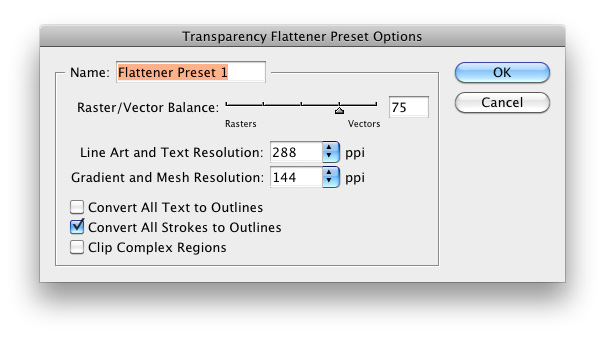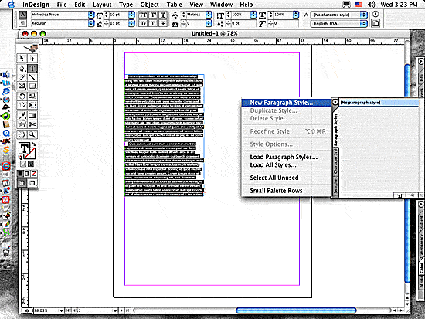This highly professional Adobe InDesign presentation template comes with plenty of well-designed cycle process infographics. Created in the size of 1920 x 1080 px by Adobe Stock contributor @GraphicArtist, this professional InDesign template consists of 18 fully customizable pages. Please note that if Firefox has been running for a long time and is using a lot of memory, it may take several minutes to release it all, as various files are (slowly) updated at shutdown. You can monitor its progress in the Windows Task Manager on the Process tab. Press Ctrl+Shift+Esc to open the Task Manager, and then click the processes tab. To find out if your. (Windows virtual memory paging file size must be increased 2 GB for each instance of InDesign Server). (Windows® virtual memory paging. Once completed, you can keep it as a digital memory book or print out a hard copy. X Research source Try one of these programs: MyMemories Suite, Memory Mixer, iPhoto,Microsoft Word or Publisher, or Adobe inDesign. We have a user with Adobe CS4 using InDesign. They are running this on a new Windows 8 64Bit, 8GB RAM, i7 machine. The program constantly states 'Out of memory' and freezes when the most simple of tasks are carried out within it. I have read elsewhere on the internet about this happening with multiple users but no resolutions seem to be around.
Last Updated on December 8, 2020 by Ian McEwan
InDesign is a publishing application used to create flyers, brochures, newspapers, books, and magazines. Sometimes, the application may crash or shuts down due to power loss while you are still using it. In this case, any unsaved progress made to your InDesign document may be lost. Also, chance are your INDD file may got deleted or overwritten by mistake. So, you may have to restart your work all over, and this can waste so much of your valuable time. Luckily, here are some ways you can use to recover InDesign file.
Method 1. Recover Unsaved InDesign File with Adobe InDesign Automatic Recovery After Crash
The InDesign application has an Automatic Recovery feature, which can help you to retrieve your work (INDD file with .INDD or .IND extension) in case you close the app without saving.
How Adobe InDesign Automatic Recovery work
When you are editing your InDesign file, the application will automatically save your changes every minute. All your work progress/changes will be stored in a temporary file (begin with “dbt”) which can be found in the Adobe InDesign recovery folder. When you save your work (“File” > “Save” or “Save As”) or exit from InDesign normally, the temporary file will be deleted. However, if the program closes abnormally and then you run the program again, InDesign will attempt to use those temporary files to open whatever was open at the time of the last crash and recover unsaved changes to your InDesign file.
Steps to Recover INDD File with InDesign Temporary file
Step 1. You need to restart the InDesign application immediately after the crash. If the application is still running, close it, and then open it again.
When the application opens, it checks the InDesign recovery folder. Any document that was open when InDesign crashed will be retrieved from the temporary files. If the auto-recovery feature locates your file, it will open it.
Step 2. Save the recovered InDesign file.
When InDesign opens your file, it will have an auto-recovery name assigned to it. It may appear as “[original name] recovered” and if the document was unnamed it will appear as “Untitled Project 1 recovered”. You will need to save the file with a new name, go to “File” > “save as” enter the name and choose the location you desire to save the file.
Note:If InDesign fails to use the temporary file to recover unsaved INDD file for you after the restart, many posts will tell you to locate the InDesign Recovery folder manually and force the program to recover data. BUT. It won’t work. Just because the information contained in the InDesign Recovery folder is in encrypted format.
Method 2. Recover Deleted, Lost or Formatted InDesign File on Windows/macOS
If your INDD file got deleted or formatted, you should use a data recovery tool rather than counting on automatic recovery. Some of these useful tools like Aiseesoft PC Data RecoveryAiseesoft PC Data Recovery can help you restore your lost InDesign file from your computer in just a few simple steps. Whatsmore, it can also recover various file formats from documents, pictures to videos.
Here are the steps you can follow to retrieve your lost InDesign file.
Step 1. Download Aiseesoft and install it on your computer.

Aiseesoft needs to be installed on your PC to recover your files.
Step 2. Once the installation process is complete, launch the application.
The program home window will open. It will ask you to select the location on your hard drive on where to run the scan.

Step 3. Select the disk location and file types, then click on “scan.”
The application will scan the drive and present the results.
Step 4. Recover your InDesign file.
Look for your InDesign file from the list of the scan results. Once you located your file, click on it and then click on the “Recover Now” button. Your InDesign file will be restored.
FAQ about Adobe InDesign Recovery
A3: Your InDesign Recovery folders location can be found here:
Run InDesign and go to Edit> Preferences> File Handling. Then you can see the InDesign Data Recovery Folder path.

Tips for Keeping Your InDesign File Safe
1. Track Down the Reason of your Problem.
Check out the ProtectiveShutdownLog file from the InDesign Recovery folder, which can help you identify a specific plugin that caused the problem. A damaged image or a dodgy font file that makes your file crash? An antivirus software delete your file by mistake? Or you are just so foolish to delete it yourself. Find out the reason and make sure it won’t happen again.
2. Different Format
Resave InDesign File to a Different Format like IDML (InDesign CS4 and later) or INX (InDesign CS3 and earlier), instead of INDD, which is more susceptible to corruption.
3. Save often and Keep Backups of Your Files.
The golden rule to keep your InDesign file safe is to save with every move to limit the chances of having to rework too much if the INDD file does corrupt without saving. Aside from saving often, someone would even back up copies to external drive or Cloud regularly, especially for a huge project. Not uncommon to have 3 to 5 copies in different storage devices before a project ends.
4. Naming and organizing your file wisely.
It’s not rocket science to name and sort your file. Here is what a professional would do:
“If you are doing initial comps for an invitation, you might have file names such as: clientinv_v1_12_12.indd, clientinv_v2_12_12.indd, etc. Once client has approved version, then the file name would be clientinv 12_14.indd or whenever the next date you worked on it. I have a job folder (2856 CofC xmas inv) and within that I have a folder with comps, PSD files, flattened files (if any), vector and client supplied files (word files, pdfs, jpgs,etc.). The live file is the only file not in a folder of its own….”
Adobe InDesign CS PageMaker Edition can open PageMaker 6.5x-7.x publications and templates. Adobe InDesign CS2 to CS6 can open Adobe PageMaker 6.0-7.x publications and templates.
Indesign CC does not support PageMaker documents (Indesign CC can't open PageMaker Documents)
The tables below describe what happens to various PageMaker features, settings, and elements when you open PageMaker publications in InDesign.
| Publication Settings | Supported? | Notes |
| Double-Sided, Facing Pages | Yes (Limited) | InDesign converts double-sided documents that do not contain facing pages into single-page spreads. When both Double-Sided and Facing Pages are selected, files are converted into facing-page spreads. |
| Preferences | Supported? | Notes |
| Snap to Constraints | No | -- |
| Save Option (Smaller, Faster) | No | -- |
| Horizontal and Vertical Nudge | No | -- |
| Greek Text Below | No | -- |
| PostScript Printing-Memory Freed for Graphics | No | -- |
| Display PPD Name | No | -- |
| Turn Pages When Autoflowing | No | -- |
| TrueType Display (Preserve Line Spacing/ Character Shape) | No | -- |
| Trapping Preferences | Yes | When Auto-overprint black strokes or fills (or both) are selected in the Trapping Preferences dialog box in PageMaker, the setting carries over to InDesign. However, Overprint Stroke or Overprint Fill is deselected in the Attributes palette. |
| Page Layout Features | Supported? | Notes |
| Booklists and Booked Publications | No | InDesign ignores Booklists when opening PageMaker publications. If you want to open all the publications on a Booklist together, run the Build Booklet plug-in in PageMaker with a layout of None selected. The booked publications are combined into one. Text blocks and frames are no longer threaded, however. |
| Index | Yes (Limited) | Index entries from a PageMaker publication appear in the InDesign Index palette. Text with cross-references that use the See Herein or See Also Herein option are mapped as See or See Also. |
| Items on the Pasteboard | Yes (Limited) | All items on the PageMaker pasteboard appear on the pasteboard of the first spread in the InDesign document. InDesign uses a different pasteboard for each spread. |
| Layers | Yes | To maintain the order of overlapping items, InDesign creates two layers when converting a PageMaker publication: Default and Master Default. Master Default contains the Master page items. |
| Master Page Items | Yes | Master pages in PageMaker convert to master pages in InDesign and retain all objects including page numbering and guides. Some layers could be added to the document. To retain the stacking order established in the original PageMaker publication. (See the Layers listing in this section.) |
| Non-Printing Objects | Yes | All objects designated in PageMaker as Non-Printing are converted with Non-Printing selected in the InDesign Attribute palette. |
| Ruler Guides | Yes | -- |
| Table of Contents | Yes | Table of Contents text converts as a Table of Contents, with PageMaker TOC Style available in the style pop-up menu in the InDesign TOC dialog box. |
| Text Attributes | Supported? | Notes |
| Text Composition | Yes (Limited) | InDesign assigns its Paragraph composer to all paragraphs. However, you can assign the single-line composer to one or more paragraphs. In InDesign, the single-line text composition engine chooses line breaks more similarly to the PageMaker composition engine, but text could still reflow. |
| Top of Caps and Proportional Leading | Yes (Limited) | InDesign uses only Baseline leading. Proportional and Top of Caps leading in PageMaker convert to Baseline leading in InDesign, resulting in text shifting. |
| Vertical Alignment in Text Frames | Yes | Vertical Alignment settings are maintained when you open PageMaker publications. |
| First Baseline | Yes (Limited) | The First Baseline of converted text can appear different than text created in InDesign. The First Baseline of converted text is set to Leading, but the First Baseline of text created in InDesign is set to Ascent by default. |
| Hyphenation | Yes (Limited) | InDesign uses a different hyphenation method than PageMaker, so line breaks can be different. |
| Fonts | Yes (Limited) | All fonts in a PageMaker publication should be active when the publication is opened in InDesign. InDesign can continue to list fonts as missing if they are activated after the PageMaker publication is opened. |
| Applied Bold or Italic Font Attributes | Yes (Limited) | InDesign preserves bold or italic formatting if the correct typeface is installed (for example, Tekton Bold). If the typeface is not installed, then the font is identified as missing in InDesign and is substituted. InDesign retains information about what text had bold or italic formatting applied to it so you can reformat it after substitution. |
| Shadow Text Attribute (Mac OS only) | No | Shadow text converts to plain text. |
| Outline Text Attribute (Mac OS only) | Yes (Limited) | Outline text converts as text with a stroke of .25 inches and a fill of paper. |
| Expert Tracking Values | No | Expert tracking values revert to a zero kerning value. |
| Paragraph Rules | Yes (Limited) | All paragraph rules convert as solid lines. Differences in the InDesign leading method affect the position of paragraph rules. Tints applied to paragraph rules are preserved. |
| [No style] Paragraph Style | Yes (Limited) | The [No style] in PageMaker is the equivalent of [Basic Paragraph] in InDesign CS2 or [No Paragraph Style] in InDesign CS. However, [Basic Paragraph] and [No Paragraph Style] picks up the attributes of a named style if that style was selected before any typing occurred in the PageMaker publication. |
| Text Links | No | Linked text documents are embedded upon conversion. |
| Hyperlinks | Yes | -- |
| Bullets and Numbering | Yes | InDesign applies bullets and numbering as normal, editable, characters. |
| Data Merge | Yes (CS2, CS PageMaker Edition)No (CS) | InDesign treats text fields as regular text until you establish a link to the data source file. |
| Color | Supported? | Notes |
| Tints | Yes (Limited) | Tints are converted as percentages of the parent color. If the parent color isn't in the Swatches palette, it's added during conversion. When an object with a tint is selected, the parent color is selected in the Swatches palette, and the tint value appears in the pop-up menu. |
| HLS Colors | No | InDesign converts color swatches based on the HLS color model to RGB values. |
| Hexachrome Colors | No | All Hexachrome colors are converted to RGB values. |
| Pantone libraries | Yes | -- |
| CMS | Yes (Limited) | Profiles that are not ICC-compliant are replaced using the default CMS settings and profiles you specified for InDesign. |
| Graphics and Objects | Supported? | Notes |
| Missing Graphic Links | Yes | Link information for missing graphics is preserved when converting PageMaker publications. After conversion, the missing links can be updated. |
| OLE Objects | No | InDesign doesn't support OLE. OLE objects drop out when you open PageMaker publications in InDesign, and any text wrap is lost. However, the bounding boxes of OLE objects convert. |
| Embedded Graphics | Yes | -- |
| Adobe Table 3.0 Objects | Yes (Limited) | PageMaker tables appear as graphics and are not editable in InDesign. |
| Fill Patterns | No | Fill patterns applied from PageMaker's Fill menu become solid. |
| Screen Patterns/Angles | No | InDesign doesn't support screen patterns or angles applied to TIFF images in Image Control; it drops them from imported TIFF files. |
| Colorized TIFF Files | Yes | -- |
| Photoshop Effects | Yes | -- |
| Strokes | Yes (Limited) | InDesign supports only solid or dashed strokes. Other stroke variations (such as Reverse or strokes created with the Custom option) either unreverse or become solid strokes in InDesign. Hairlines become .25-point strokes. |
| Keylines | Yes (Limited) | Keylines become grouped to the object to which they are applied. |
| Text Wrap | Yes | -- |
| Masking | Yes (Limited) | PageMaker items arranged between an item and its mask will be positioned behind the item and mask after you open the publication in InDesign. |
| Inline Graphics | Yes | -- |
| Imported PDF Documents | Yes (Limited) | InDesign displays the first page of a multi-page PDF file, regardless which page you placed in the PageMaker publication. To display the correct page, in InDesign delete the image (that is, the PDF file), and place the PDF page again. |
| Imported QuickTime Movies | Yes (Limited in CS and CS PageMaker Edition) | InDesign CS and CS PageMaker Edition import QuickTime movie frames unless they have been scaled. If a movie frame has been scaled, the movie is reimported to InDesign, scaled to 100% (horizontally and vertically. And, it's positioned in the upper-left corner of the frame. |
| Scaled Images | Yes (Limited) | Scaled images in documents with broken links are imported at a different size than expected. |
Indesign Out Of Memory Mojave

Indesign Out Of Memory Mac
For more information, see the Convert PageMaker documents secion of the InDesign CS4 online help.
